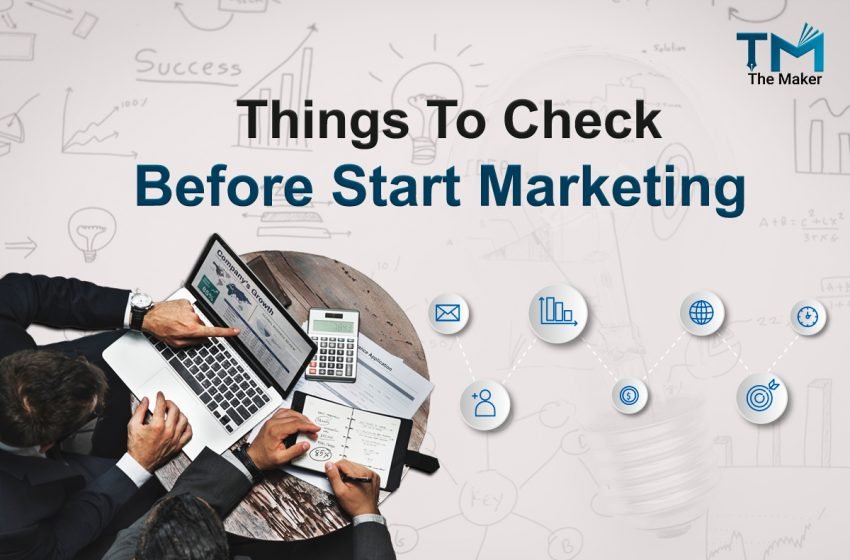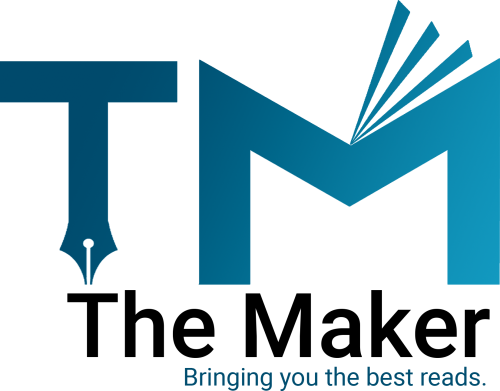Things To Check Before Start Marketing

Launching new marketing and promoting the initiative is no doubt a difficult task, and it’s essential to overlook vital steps within the hustle of a giant project. However, if you miss any step, it may damage your marketing strategy. A little mistake can mean the loss of money and a good return.
For that reason, we have put a list of things to check before starting any marketing. Bookmark this page!
- Establish and define the brand
Good branding acts as a preliminary for everything. Remember that your company is not a unique name or logo; instead, your brand is the anecdote the company tells and the relationship it builds with customers. Therefore, knowing how to communicate who you are, why you do, and what you do it is crucial. Always keep in your mind that people buy stories rather than products. However, it sounds different, but it’s true.
- Identify your audience
Instead of thinking about the mass audience, try to find out who is your targeted audience. Audience specifications such as gender, age group, caste, occupation, area, and interests are the very basic points on which you must need to gather accurate information. This can be called your ICP (ideal customer profile). After accumulating information on that, you can able to know how to influence them and also try to determine what drives their life decisions. Moreover, you also have to know what type of personality they have. All these will help you a lot to connect with your target properly.
- Disseminate a clear message
Now you are clearly aware of that who you are and who your customer is. So you need to disseminate transparent messaging that communicates why your ideal clients need you and your products or services. As the world of advertising is cacophonous, it is essential to make others know how much value you provide.
- Outline a budget
As the budget is elementary for all businesses as well as marketing, so need mandatorily starts brand marketing after fixing the budget. Many business person or entrepreneur starts marketing without deciding the budget, and this sometimes puts them in a problem. But it is to remember that before getting started with the budget, ask yourself what a buyer is worth to you. Proper marketing with a planned budget leads you to success. Once you recognise this, you can easily decide what you are willing to pay to accumulate a client.
- Build a good website and/or landing pages
After this, you just need to know how to reach your audience. For that, build a good website or landing page where the conversion happens. This is the place where your promoting efforts convert into signups, leads, and sales. Sadly, several businesses can drive traffic right to their home page, which may be a good way to lose lots of potential customers.
In real fact, every campaign you run should drive users to the relevant landing pages. These don’t have to be compelled to be too complicated. However, they must ingeminate the worth offered in the ad and show an awfully clear call to action.
- Utilize CRO
Now you have to use an optimization strategy which otherwise can be called “marketing insurance.” Conversion Rate Optimisation (CRO) is a data-driven method of testing a landing page or website’s effectiveness for feat conversions and fine-tuning it; thus, you’ll see the best results. Though it sounds very complex, it’s extraordinarily vital to ensure that you are putting in all your marketing expenses for success.
- Determine your channels
In addition, you need to determine which channel you select to advertise based on where your customers spend most of the time. If you decide to run pay-per-click (PPC) advertisement, are your customers most likely to view your ad on Google, Facebook, LinkedIn, Snapchat, Instagram, etc.? Various company advertises their brands everywhere; however, this is not often the most effective approach. Beyond that, some channels are used for cold acquisition or awareness, whereas others are strictly used for retargeting.
Besides PPC and SEO optimization, content marketing is also considered vital. These are used to make sure that your website ranks visibly in Google’s search results.
Lastly, think about awareness or out-of-home advertising like billboards, radio, and mail. Although this is not the first preference, but it depends on wherever your customers are most possibly to be reached.
- Establish tracking
If you are paying money for advertisement and not tracking the place properly, that means you are wasting every rupee on marketing. You need to analyze your business’s matrix to measure your ads’ effectiveness and engagement. That means you need to find out what is going to make your campaign successful. Moreover, you need to determine other smaller goals that are measurable on the path to purchase, such as comments, likes, shares, etc. We tend to won’t get into the technicalities of tagging and tracking during the post; however, once you recognize what to track, install the correct tracking on your landing page and/or website and check it to know true events are firing in your analytics.
Remember that some conversion events may be tough to realize the first time a visitor interacts with your brand. So it will be crucial to utilize marketing funnels that will bring cold traffic with brand awareness ads first and then retarget them with an effort to make them a customer.
When you are tracking ad performance, take care you have got easy access to transparent data reports so that you can make choices and optimize what’s working. Both Google Ads and Facebook Ads Manager have superb interfaces that can track almost any metric you can think of.
- Have a follow-up plan
Once a customer makes a purchase, then it commonly comes to the mind what happens next? Because this is not the end, it’s the beginning. For any eCommerce business, the main target is to make customers their raving fans along with keeping them for a lifetime. That’s why you need to set a clear plan on how you will communicate with the customer and continue to develop a relationship with them.
- Execute systematically and consistently
Lastly, keep patience and consistency as you watch and optimize your campaigns. If you’re advertising on Google and Facebook, these ads gain traction and build momentum as time passes, so they shouldn’t be turned off and on periodically.
Always be ready for your next marketing initiative. Focus on developing a brand that individuals wish to purchase. And perpetually optimizing your website experience for conversion!


